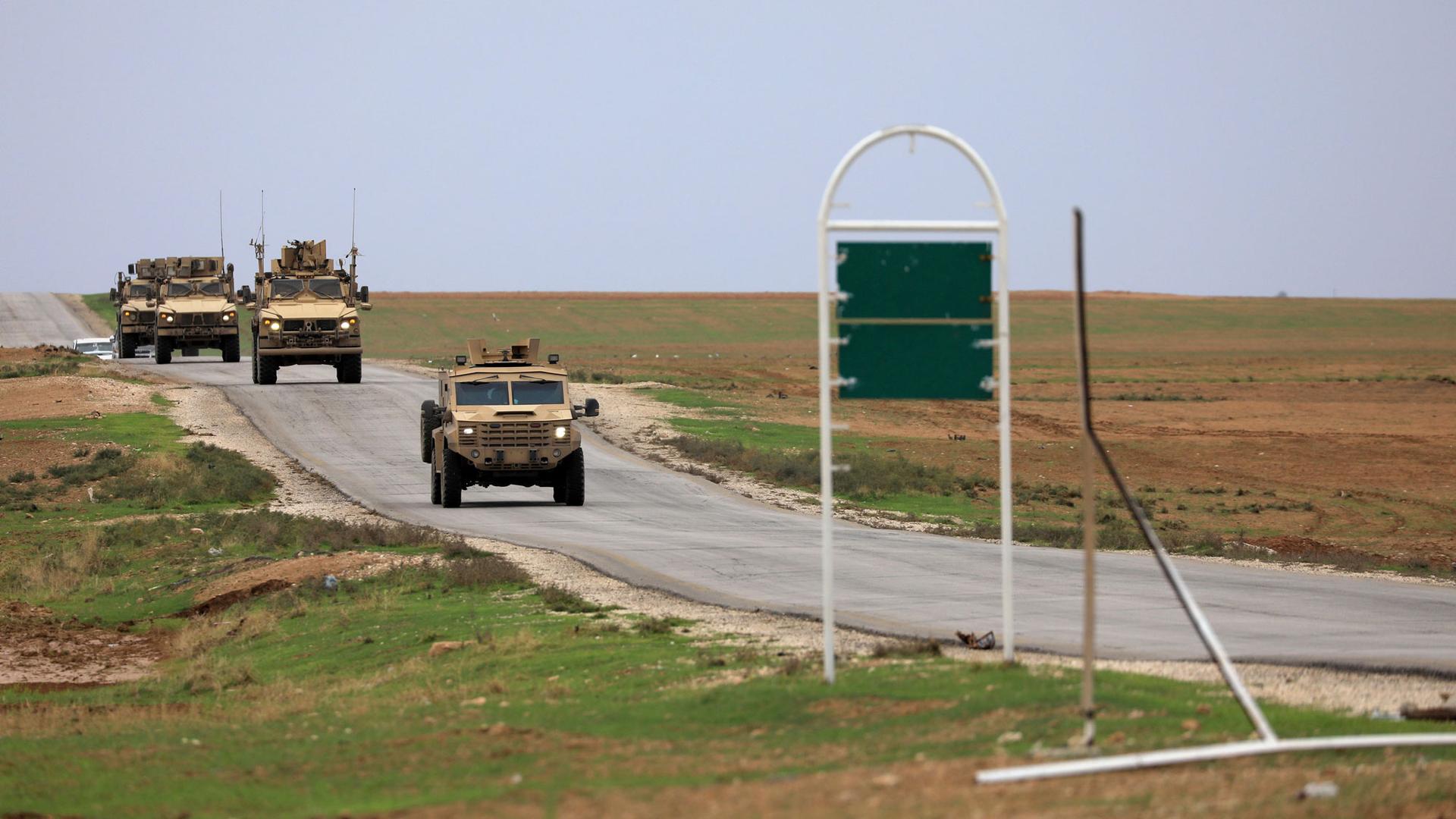US eyes complete withdrawal of troops from Syria
US troops patrol near Turkish border in Hasakah, Syria, 2018.
US President Donald Trump declared victory against the ISIS in Syria on Wednesday and hinted that a withdrawal could be imminent, tweeting, “We have defeated ISIS in Syria, my only reason for being there during the Trump Presidency.”
A decision to withdraw the last of about 2,000 troops would upend assumptions about a longer-term US military presence in Syria, which US Defense Secretary Jim Mattis and other senior US officials have advocated to help ensure ISIS cannot reemerge.
Trump has previously expressed a strong desire to bring troops home from Syria when possible, and his tweet on Wednesday showed he saw no further grounds for remaining.
US officials, who spoke to Reuters on condition of anonymity, did not disclose details about the deliberations on the troop withdrawal, and the timing was not immediately clear.
But one official told Reuters that partners and allies had been consulted.
Two US officials said a decision to withdraw had already been reached but that could not be immediately confirmed. It was unclear how soon a decision detailing any withdrawal plans might be announced.
The Pentagon declined to comment, saying only that it continued to work with partners in the region.
Republican US Senator Lindsey Graham, often a Trump ally, said a withdrawal would have “devastating consequences” for the United States in the region and throughout the world.
“An American withdrawal at this time would be a big win for ISIS, Iran, (President) Bashar al Assad of Syria, and Russia,” Graham said in a statement.
Many of the remaining US troops in Syria are special operations forces working closely with an alliance of Kurdish and Arab militias known as the Syrian Democratic Forces, or SDF.
The partnership with the SDF over the past several years has led to the defeat of ISIS in Syria, but has also outraged NATO ally Turkey, which views Kurdish YPG forces in the alliance as an extension of a militant group fighting inside Turkey.
The deliberations on US troops come as Ankara threatens a new offensive in Syria. To date, US forces in Syria have been seen as a stabilizing factor in the country and have somewhat restrained Turkey’s actions against the SDF.
A complete withdrawal of US troops from Syria would still leave a sizeable US military presence in the region, including about 5,200 troops across the border in Iraq. Much of the U.S. campaign in Syria has been waged by warplanes flying out of Qatar and other locations in the Middle East.
Still, Mattis and US State Department officials have long fretted about leaving Syria before a peace agreement can be reached to end that country’s brutal civil war, which has killed hundreds of thousands of people and displaced around half of Syria’s pre-war population of about 22 million.
In April, Mattis said: “We do not want to simply pull out before the diplomats have won the peace. You win the fight and then you win the peace.”
ISIS is also widely expected to revert to guerilla tactics once it no longer holds territory. A US withdrawal could open Trump up to criticism if ISIS reemerged.
Trump has previously lambasted his predecessor, Barack Obama, for the withdrawal of US forces from Iraq that preceded an unraveling of the Iraqi armed forces. Iraqi forces collapsed in the face of ISIS’ advance into the country in 2014.
A pullout would allow other countries, like Iran, to increase their influence in Syria, experts said.
“If we withdraw then who fills the vacuum, who is able to stabilize and that is the million dollar question,” said Andrew Tabler, a Syria specialist at the Washington Institute for Near East Policy think-tank.
“The timing is hard to understand,” Tabler said.
Last 1 percent
ISIS declared its so-called “caliphate” in 2014 after seizing large swathes of Syria and Iraq. The hardline Islamist group established its de facto capital in the Syrian city of Raqqa, using it as a base to plot attacks in Europe.
According to US estimates, the group oversaw about 39,000 square miles of territory, with about 8 million people under ISIS control. It had estimated revenues of nearly one billion dollars a year.
Brett McGurk, the US special envoy for the global coalition to defeat ISIS, said last week that the group was down to its last 1 percent of the territory it once held in its self-styled “caliphate.” The group has no remaining territory in Iraq.
Hajin, the group’s last major stronghold in Syria, is close to being seized by US-backed SDF forces.
After losing Hajin, ISIS will control a diminishing strip of territory along the eastern bank of the Euphrates River in the area where US-backed operations are focused. The militants also control some desert terrain west of the river in territory otherwise controlled by the Damascus government and its allies.
But US officials have warned that taking back the group’s territory would not be the same as defeating it.
“Even as the end of the physical caliphate is clearly now coming into sight, the end of ISIS will be a much more long-term initiative,” McGurk told a State Department briefing on Dec. 11.
US Marine General Joseph Dunford, the chairman of the Joint Chiefs of Staff, cautioned earlier in December that the United States had trained only about 20 percent of Syrian forces required to stabilize areas captured from ISIS.
By Idrees Ali and Phil Stewart/Reuters
Reporting by Phil Stewart and Idrees Ali; Editing by Frances Kerry.
